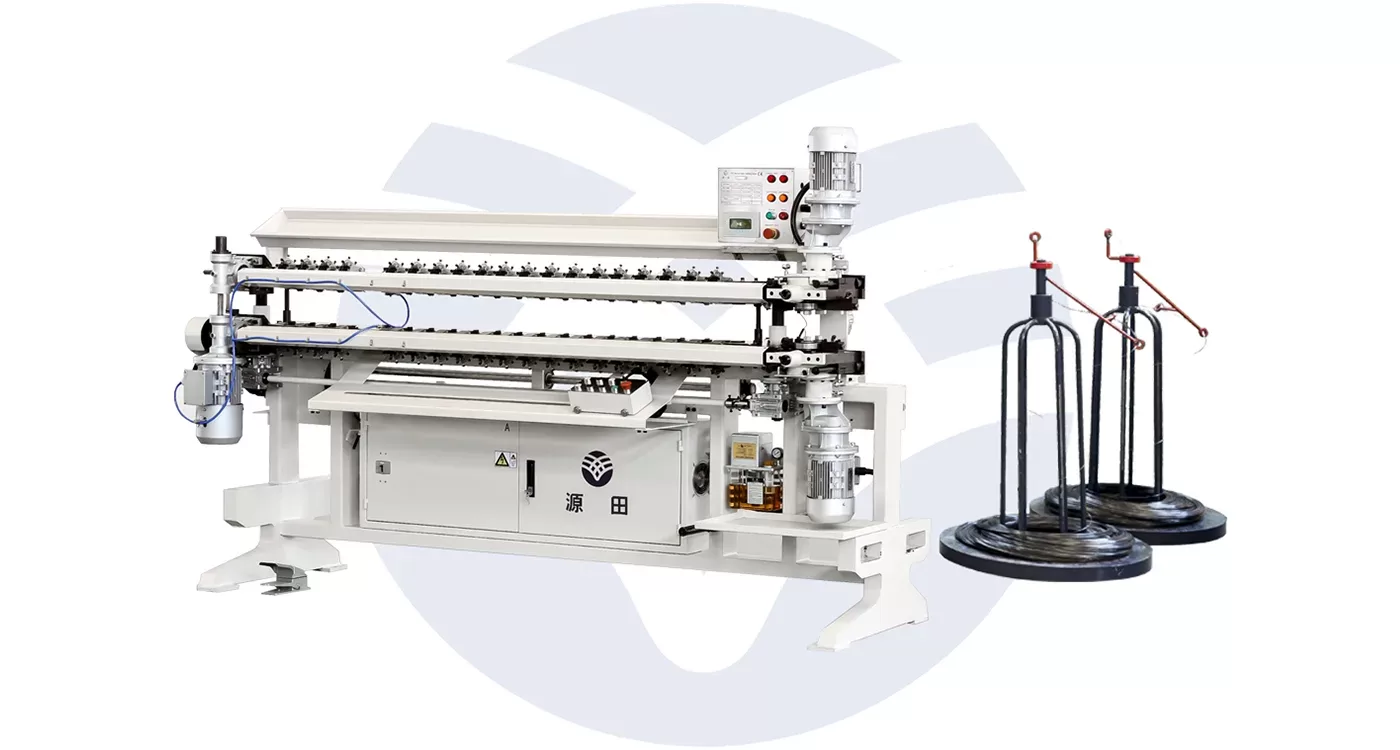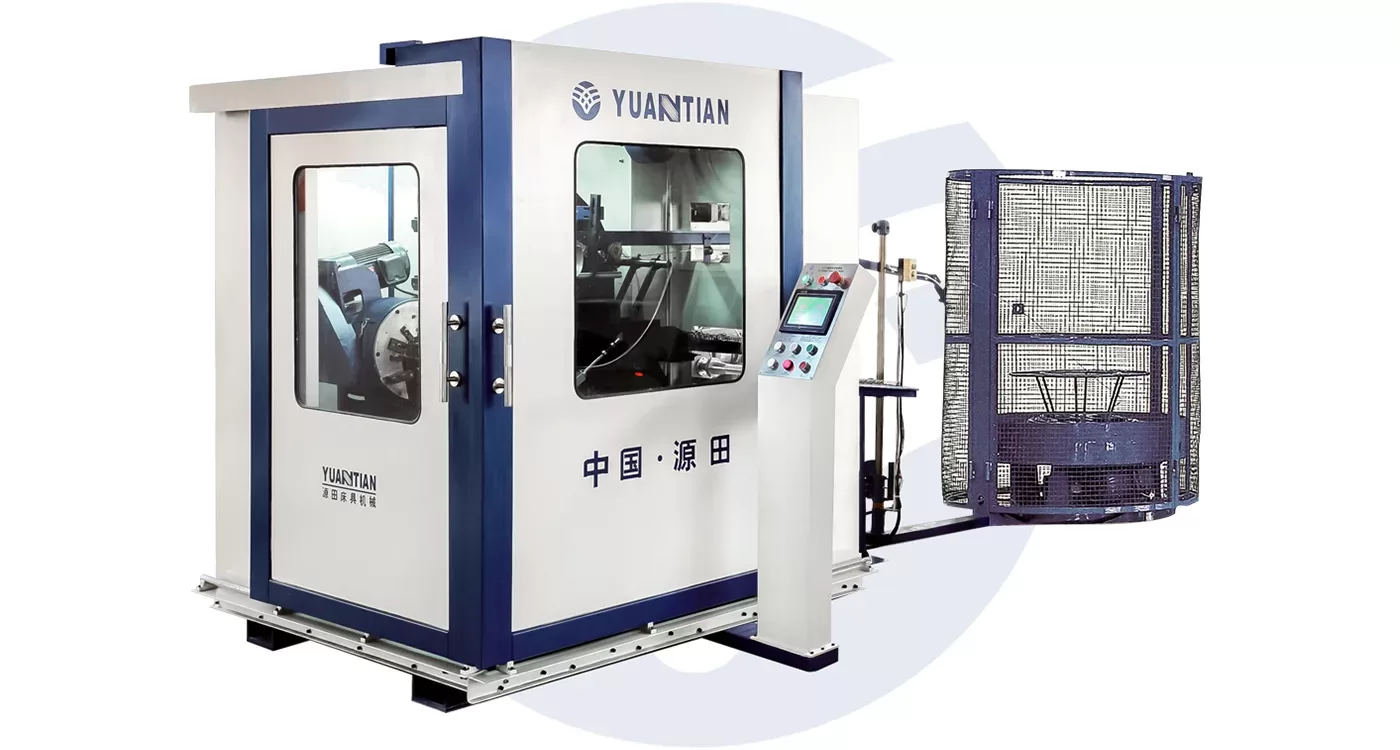- Home » The Evolution of Bonnell Spring Machines in the Mattress Industry
The mattress industry has undergone significant transformation over the years, from the materials used to construct mattresses to the machinery employed in their production. One of the critical innovations that has shaped the modern mattress market is the Bonnell spring system, a coil system still widely used today.
The evolution of Bonnell spring machines, responsible for producing these coils, has played an essential role in ensuring mattresses are not only comfortable but also durable and cost-effective. This passage explores the development of these machines and their impact on the industry, from their origins to modern advancements.
The Origins of the Bonnell Spring System
The Bonnell spring system originally appeared in the 19th century when it was designed for carriage seats. Because of its great support qualities, it also spread into the mattress industry. The Bonnell spring is an hourglass-shaped coil that provides a properly balanced combination of flexibility and firmness. Each coil is interconnected with the neighbor ones by helical wires and forms some kind of web of springs that distribute the weight equally along the entire area of the mattress.
With the discovery of Bonnell springs, mattresses became far more advanced from those that were simply stuffed with cotton, wool, and horsehair, all of which had a tendency to sag and often needed repair. This was a whole new dimension in comfort and durability for mattresses, but these coils needed a special machine for mass production, which gave birth to the invention of Bonnell spring machines.

The First Bonnell Spring Machines
Manufacturing Bonnell springs at the beginning by hand or with some mechanical means was a very long, time-consuming process. The want for efficiency created the invention of the first Bonnell spring machines at the beginning of the 20th century. This early machine is mechanically operated, and controlled by manual or semi-automated processes. They could wind the wire in the hourglass shape and connect the coils to the helical wires, but again the process was rather slower and more expensive than what is contemporary nowadays.
Though very primitive by today’s standards, these early machines greatly advanced the manufacturing process for mattresses. It would be with these machines that factory production of springs was possible in higher quantities and consistency, hence making a more standardized and cheaply available product for consumers. Greater amounts could be produced to meet higher demand, and the product became cheaper due to the greater supply.
The Rise of Automated Bonnell Spring Machines
The development of Bonnell springs began when fully automatic machines were developed in the mid-20th century. Automatic machines brought up mass production of the spring at a higher speed and with less involvement of human labor.
These machines can carry out all the steps involved in the process from winding wires in coils to connecting them with helical wire. This, in turn, allowed manufacturers to save significantly on labor for much of the production process while improving consistency and quality across the mattresses.
Probably the most important development in the evolution of automated Bonnell spring machines was the utilization of programmable logic controllers or PLCs, which brought greater precision and flexibility to the manufacturing process. Thanks to PLCs, the manufacturers could change some settings on a machine so that it would wind coils in various sizes, density, and strength.
Greater variability for different mattress types was achieved with that. Not only did this diversify the product, but it also made sure each manufacturer could be in a position to make products suitable for each particular need or type, such as orthopedic support or extra comfort.
Advancements in Materials and Technology
During the last decades, there was a great interrelation between the development of Bonnell spring machines and ongoing progress in the spheres of materials and technology. For example, the creation of steel alloys of high strength allowed the manufacturing of lighter springs that retain their shape and supportive qualities for a long time. These materials extended the life of the Bonnell spring mattress and allowed the latter to be more competitive with new mattress technologies such as memory foam and latex.
Moreover, the integration of computer-aided design (CAD) and computer-aided manufacturing (CAM) technologies have also been implanted in the machines used to produce Bonnell springs, giving rise to a new level of accuracy and speed.
Through CAD software, manufacturers are able to design coils with specifications that can ensure every coil works optimally within the mattress structure. To this end, CAM technology ensures these designs are accurately produced and reproduced with much lower levels of waste, further enhancing quality control across the board.
Another important technological innovation in Bonnell spring machines represents multi-head machines. These machines can make several springs at a time and speed up production. Several coils operating in parallel mean that higher output rates can be achieved while there is no quality compromise and as such, it cuts down production costs even further.
Impact on the Mattress Industry
The changes in Bonnell spring machines have pushed the stakes of mattresses making these changes concern economic production and consumer preference. As machines have grown more efficient, the cost of producing Bonnell spring mattresses has come down, thus reaching more people. This has helped the Bonnell spring mattresses stay among the leading varieties of mattresses across the world, with technological advancement regarding memory foam and hybrid mattresses.
This has also enabled manufacturers to offer more variety, styles, and types that can suit every sleeping style or preference-from firm mattresses capable of supporting the back to softer and more flexible alternatives. There is a myriad number of them resulting from the great capability of machinery.

The Future of Bonnell Spring Machines
As for its future, further automation, robotics, and especially advances in materials science are likely to be the factors that shape the future of Bonnell spring machines. This would imply full automation of production lines, with artificial intelligence allowing for an even greater degree of customization and efficiency. Instead, these machines could adapt to changing consumer demand in real-time, making mattresses suited for certain specific individual tastes.
Other factors gaining much attention in the industry include sustainability. This means that future models of the Bonnell spring machine may be designed to allow the use of recyclable materials or eco-friendly production materials. The energy usage during the production process may also be brought to a minimum. As consumers are getting increasingly concerned about the environment, the demand for sustainable mattress solutions will drive further innovations in spring machine technology.
Conclusion
The evolution of Bonnell spring machines has been a critical factor in the growth and transformation of the mattress industry. From the early mechanical machines to today’s automated, high-tech systems, these machines have enabled manufacturers to produce more affordable, durable, and customizable mattresses. As technology continues to advance, the future of Bonnell spring machines promises even greater innovation, ensuring that the Bonnell spring system remains a key player in the competitive mattress market for years to come.
Связанные с ними товары

















